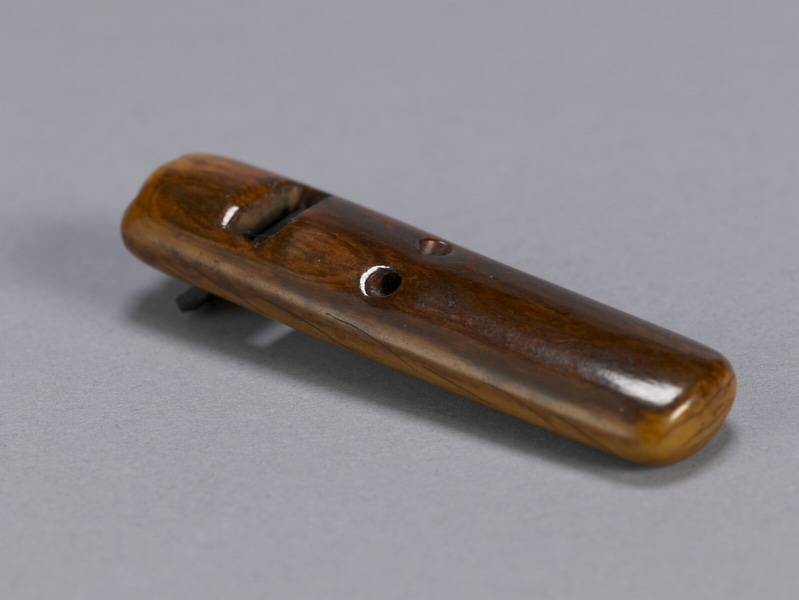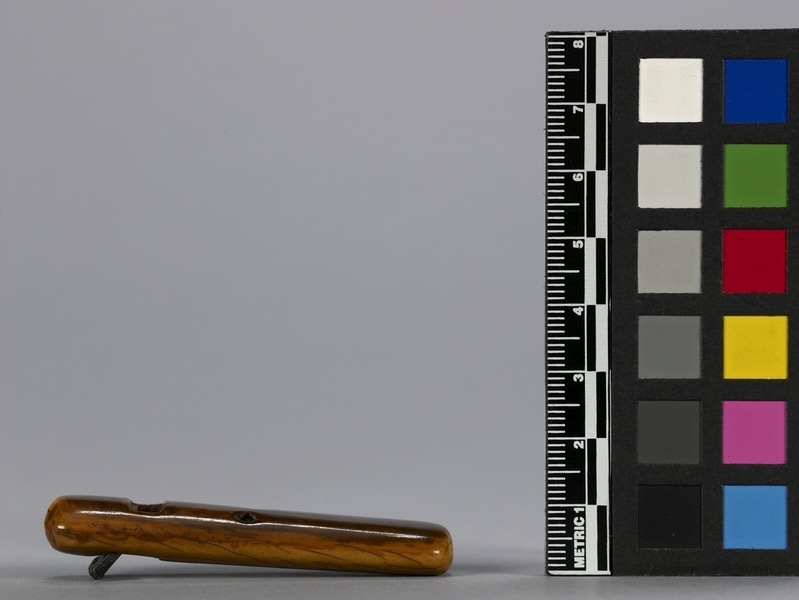Ornament Item Number: Ed5.1422 from the MOA: University of British Columbia


Description
Netsuke carved of highly polished ivory shaped like a rectangular cube with rounded edges and corners; one short end having several diagonal grooves. Two holes connected transversely bored at mid-point on one side. A rectangular hole is cut through the piece 1-1.5 cm. from one end, through which is inserted, at a 45 degree angle, a rectangular piece of black wood, protruding edge is irregularly grooved. Colour varies from yellow to dark brown. Some cracking.
History Of Use
Toggle use to support an inro (small container) on a belt. This netsuke is carved in the form of a carpenter's plane. Netsuke were worn by Japanese men from the late 16th century to the mid-19th century; strung on one end of a cord; at the other end an inro, for smoking accessories, a purse, or other things were hung. A bead (ojime) was strung on the cord. The cord was put through the wearer's girdle and the netsuke prevented the objects from slipping through.
Cultural Context
worn by men
Item History
- Made in Japan before 1953
- Collected before 1953
- Owned by Marion Stephan
- Owned by Charles H. Stephan before January 10, 1977
- Received from Charles H. Stephan (Donor) on January 10, 1977
What
Who
- Culture
- Japanese
- Previous Owner
- Marion Stephan and Charles H. Stephan
- Received from
- Charles H. Stephan (Donor)
Where
- Holding Institution
- MOA: University of British Columbia
- Made in
- Japan
When
- Creation Date
- before 1953
- Collection Date
- before 1953
- Ownership Date
- before January 10, 1977
- Acquisition Date
- on January 10, 1977
Other
- Item Classes
- carvings & sculpture
- Condition
- good
- Current Location
- Case 79
- Accession Number
- 0352/0158